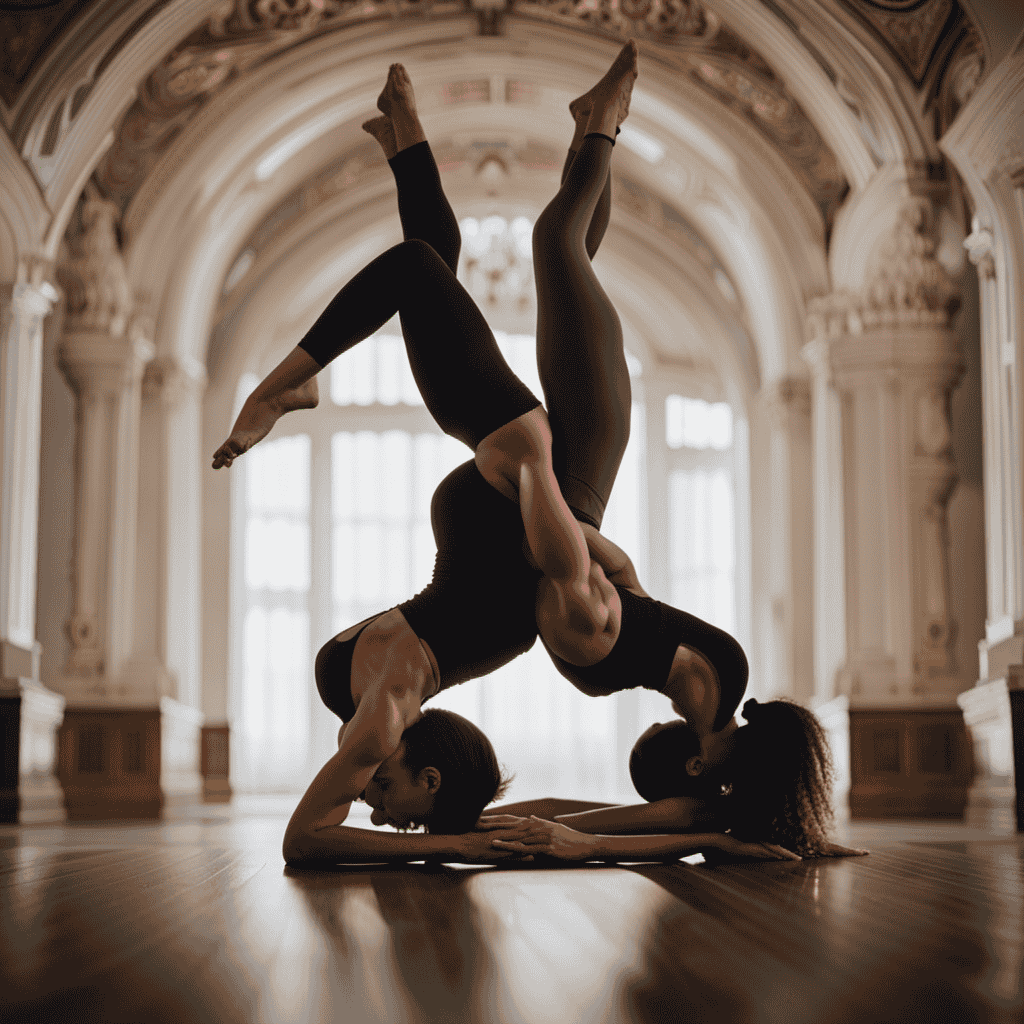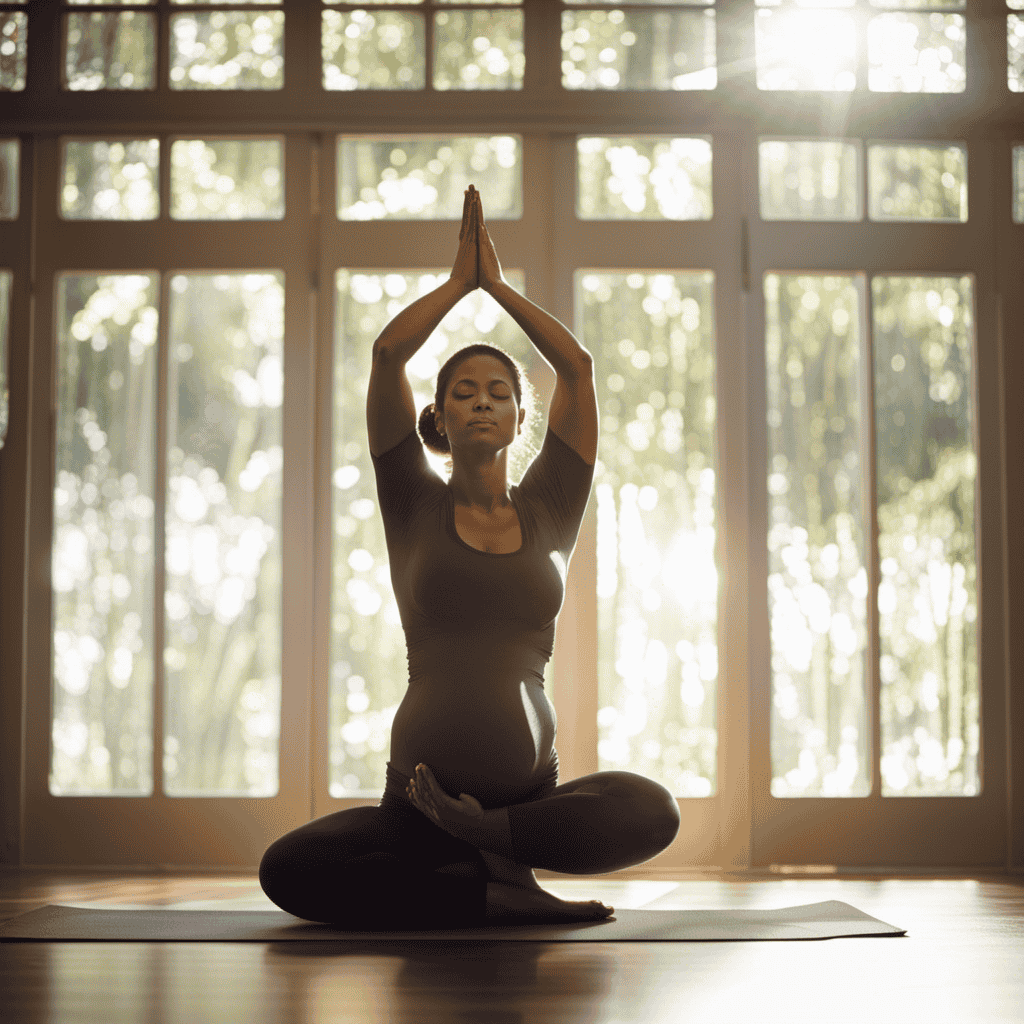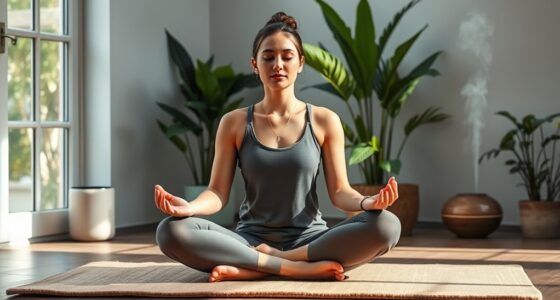Are you prepared to elevate your yoga practice to new levels? Prepare to embark on an exploration of trust, coordination, and connection as we dive into the realm of partner yoga.
In this article, we will explore dynamic yoga poses specifically designed for practicing with a partner. By joining forces, you and your partner can deepen your stretches, enhance your balance, and experience the joy of shared movement.
So grab a partner, roll out your mats, and let’s dive into the exhilarating world of partner yoga.
Key Takeaways
- Partner yoga poses deepen stretches and enhance balance.
- Trust and connection are built through partner yoga practice.
- Partner yoga increases flexibility and releases tension in the lower back.
- Balancing poses in partner yoga improve stability, alignment, and focus.
Top Yoga Poses
I love practicing partner yoga because it allows me to explore challenging poses and modifications with my yoga buddy. One of my favorite aspects of partner yoga is being able to incorporate hamstring stretches into our practice.
These stretches not only help to increase flexibility in the hamstrings, but they also provide a deep release in the lower back. One challenging modification that we enjoy is the Double Downward Dog. In this pose, one person is in a traditional downward dog while the other person stands behind and gently pushes down on their partner’s hips, allowing for a deeper stretch.
Another challenging modification we like to explore is the Down Dog Bow Pose, where one person is in a downward dog and the other person stands facing them, reaching their hands back to grab their partner’s ankles and gently pulling them up into a bow shape.
These modifications require trust and coordination, but they allow us to take our practice to new heights.
Balancing Poses
Balancing poses require focus and coordination to find stability and alignment. When practicing these poses with a partner, the benefits go beyond physical strength and flexibility. Partner yoga allows for a deeper connection with your partner, building trust and communication.
Here are four dynamic balancing poses for partner practice:
-
Double Tree Pose (Vrksasana): Stand side by side, placing the outside leg’s foot against the inside leg’s calf or thigh. Reach your arms up and interlace your fingers with your partner, finding balance and support together.
-
Partner Boat Pose: Sit facing each other, with your knees bent and feet touching. Hold onto each other’s forearms and lean back, lifting your feet off the ground. Find balance and stability, engaging your core muscles.
-
Double Standing Forward Fold: Stand facing each other, holding onto your partner’s wrists. As you fold forward, your partner leans back, creating a counterbalance. Feel the stretch in your hamstrings and release tension together.
-
Sitting Spinal Twist: Sit back to back with your partner, crossing your legs in front of you. Reach your opposite arms towards the sky, and then twist towards the side, using your partner’s back for support. Switch sides and repeat.
Partner yoga poses not only challenge your balance, but also cultivate trust, communication, and connection with your partner. Practice these poses mindfully, respecting each other’s limitations, and enjoy the benefits of partner yoga.
Forward Folds and Twists
When practicing forward folds and twists, it’s important to maintain proper alignment and engage the core muscles for a deeper stretch.
These partner stretches can help deepen your practice and provide support and assistance.
One popular pose is the Double Standing Forward Fold. Both partners stand facing each other and fold forward, reaching for their partner’s hands or forearms. This allows for a deeper stretch in the hamstrings and lower back.
Another beneficial pose is the Sitting Spinal Twist. Partners sit back-to-back and twist their torsos in opposite directions. This helps to stretch the spine and release tension in the back.
For beginners, modifications such as using props like blocks or straps can be helpful in achieving the proper alignment and gradually increasing flexibility.
Remember to always listen to your body and adjust as needed to prevent any discomfort or pain.
Frequently Asked Questions
What are some safety tips to keep in mind when practicing partner yoga poses?
Safety precautions are crucial when practicing partner yoga poses. It is important to establish trust, communicate effectively, and respect individual limitations. No specific equipment is necessary, but practicing basic yoga postures beforehand is recommended.
Can partner yoga poses be modified for different levels of flexibility?
Yes, partner yoga poses can be modified to accommodate different levels of flexibility. These modifications allow individuals to safely and comfortably participate, while still reaping the benefits of increased flexibility and improved body awareness.
How can I improve my coordination and trust with my partner during partner yoga practice?
To improve coordination and trust with your partner during partner yoga practice, focus on improving communication, building strength, and flexibility. Practice clear communication, trust-building exercises, and partner stretches to enhance your connection and enhance your practice.
Are there any specific warm-up exercises or stretches recommended before attempting partner yoga poses?
Preparation exercises and partner warm-ups are essential before attempting partner yoga poses. They help to improve coordination, trust, and flexibility. Some recommended warm-up exercises include shoulder rolls, neck stretches, and gentle twists.
What are some common mistakes to avoid when practicing partner yoga poses?
Some common mistakes to avoid in partner yoga include not communicating effectively, not practicing proper alignment and form, and pushing each other too hard. It is important to listen to your partner and respect each other’s limitations. Effective communication is key to a safe and enjoyable practice.
Conclusion
In conclusion, partner yoga is a beautiful way to deepen connections and foster trust between individuals. By practicing dynamic poses together, we not only challenge our bodies but also our ability to communicate and support one another.
Just like a well-choreographed dance, partner yoga requires coordination and harmony. It’s like two puzzle pieces fitting perfectly together, creating a seamless flow of energy and movement.
So grab a partner, find your balance, and embark on a journey of shared strength and unity through the power of partner yoga.









